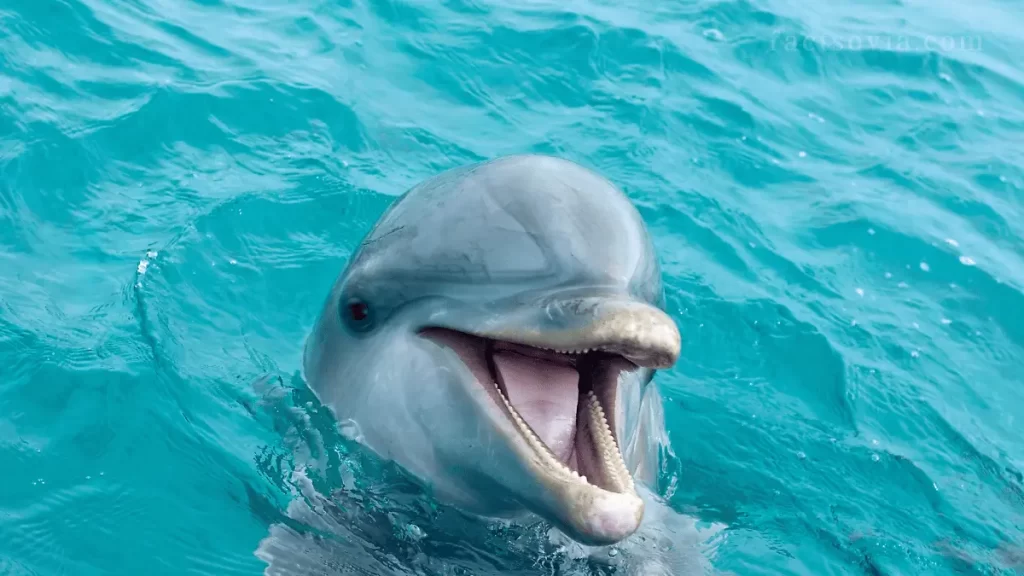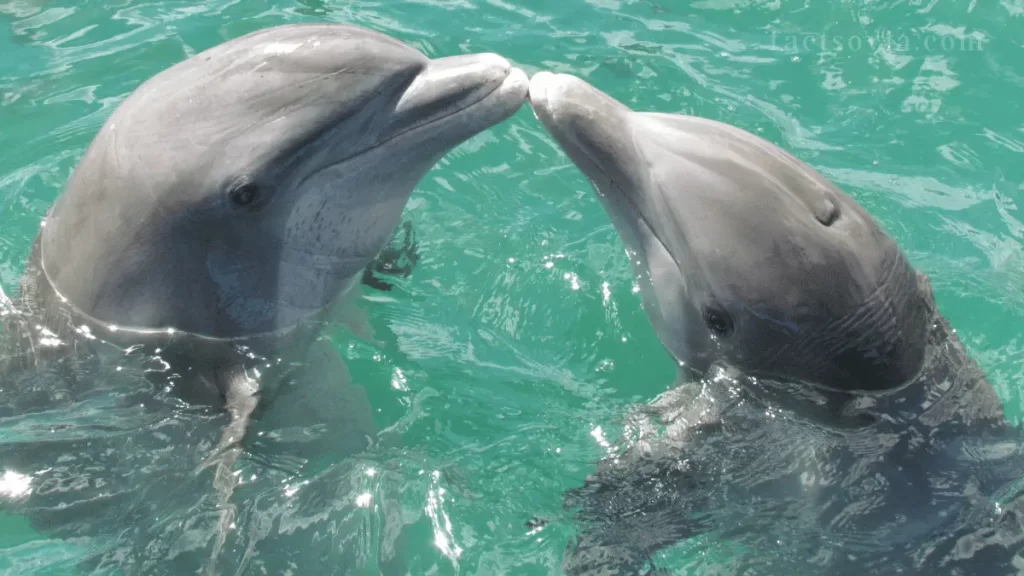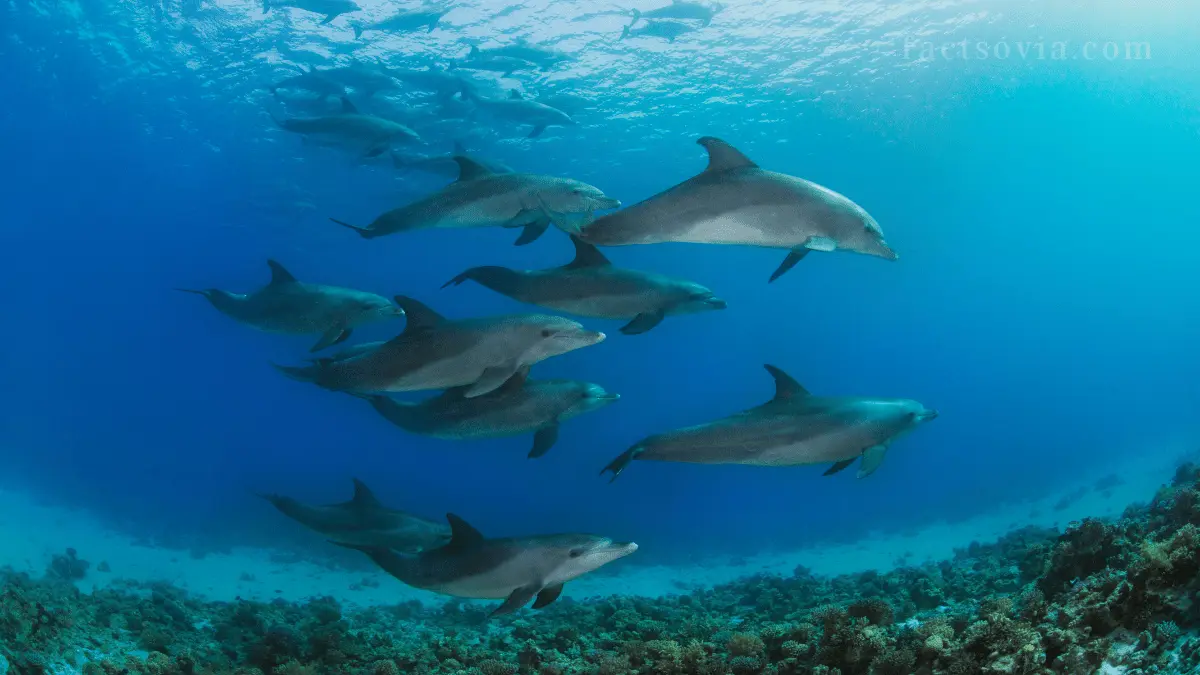We use affiliate links to run our site. When you buy through links on our site, we may earn an affiliate commission, without any added cost to you. Learn more
Who doesn’t love dolphins? These playful, intelligent creatures are beloved by people all over the world. As animal lovers, we often wonder about their daily habits and what they eat.
Well, you’re in luck because today we’re diving into the world of dolphin cuisine. Get ready to learn all about these marine mammals’ diets and how they satisfy their hunger.
14 Fascinating Facts About Dolphins You Never Knew
what Do Dolphins Eat:
Dolphins eat a wide variety of foods, depending on the species and the environment they live in. While some species stick to a predominately fish-based diet, others branch out to include squid and crustaceans.
One of the most common types of fish that dolphins devour are herrings. These sleek fish are high in fat and provide dolphins with the energy they need to swim and hunt.
Another favorite food of dolphins is the cero, a type of mackerel that is found in warmer waters. Dolphins also love to snack on anchovies, mullets, and sardines.
In areas where these species are abundant, dolphins often hunt in large groups, called pods. They work together to corral the fish into a tight ball, making it easier for them to gobble up their prey.

While fish make up the bulk of most dolphins’ diets, some species have more eclectic tastes. For example, the bottlenose dolphin, which is perhaps the most well-known type of dolphin, often eats squid and octopus.
These creatures are more difficult to catch than fish because they can swim quickly and escape inks, but dolphins are up for the challenge. They use their sharp teeth to grasp their prey and then swallow it whole.
In addition to fish and other marine creatures, dolphins also eat some plant-based foods. For example, some species of dolphin have been observed eating seaweed.
It’s not exactly their favorite food, but in areas where other food sources are scarce, they’ll take what they can get.
Dolphins that live close to shore have also been known to eat crustaceans like crabs and shrimp.
The following chart shows the diets of different dolphin species:
| Dolphin Species | Habitat and Range | Primary Diet |
|---|---|---|
| Bottlenose Dolphin | Worldwide in temperate and tropical seas | – Spring/Summer: Salmon – Winter: Herring and Mackerel – Other locations: Local fish such as mullet, mackerel, catfish, and tropical species. |
| Amazon River Dolphin | Amazon River and its tributaries | – Over 40 species of freshwater fish – Freshwater crustaceans |
| Spinner Dolphin | Tropical and subtropical waters | – Fish, jellyfish, krill |
| Dusky Dolphin | Coastal waters and offshore | – Shrimp, squid, and various fish including tiny anchovies |
| Rough-toothed Dolphin | Deep water oceans | – Mostly squid |
| Commerson’s Dolphin | Kelp beds close to shore and near the seabed | – Small fish, crabs, octopus, small crustaceans |
| New Zealand Dolphin | Shallow coastal waters | – Small fish, squid |
How Does A Dolphin Catch Its Food:
Dolphins use a variety of methods and strategies to catch their food, depending on their habitat and the availability of food resources. Here are some of the ways dolphins catch their food:

- Cooperative Hunting: Dolphins are known for their ability to cooperate when hunting. In open waters, a group of dolphins may encircle a large school of fish and work together to herd the fish into a small, dense mass. They take turns charging through the school to feed. This cooperative hunting technique helps them catch more fish efficiently.
- Pinwheeling: In some cases, dolphins near the surface of the ocean, like those in Sarasota Bay, Florida, may roll to their sides with one pectoral flipper raised high. They encircle a school of fish, splash their tail flukes, and force the fish to bunch together tightly. This technique is known as “pinwheeling,” and it allows dolphins to grab a quick meal on the go.
- Drivers and Blockers: This is a rare example of an animal hunting technique that demonstrates a clear division of labor. Some dolphins act as “drivers” by smacking the water’s surface with their tail flukes to herd fish into a circle, while others stay close together to block and prevent fish from escaping. This technique has been documented in bottlenose dolphins off the waters of Cedar Key, Florida.
- Strand Feeding: Dolphins sometimes herd schools of fish against sandbars, shorelines, or mud banks to trap them in shallow water where the fish are easy prey. This hunting technique is referred to as “strand feeding.”
- Individual Hunting: Dolphins also feed on individual, non-schooling fish. They may use their tail flukes to flip a fish out of the water and then retrieve the stunned prey.
- Crater Feeding: During the hunting technique known as “crater feeding,” dolphins dive snout-first into the sandy bottom, trying to grab an unsuspecting fish. This technique is named after the craters the dolphins leave behind in the sand.
- Tool Use: In some cases, dolphins demonstrate tool-use behavior. For example, in Shark Bay, Western Australia, researchers have observed some female dolphins using a certain species of sponge as a shield when foraging in areas with rocky or sandy bottoms. They carry the sponge on their beaks, drop it before surfacing, and then swallow prey. This sponge acts as protection against spines of certain fishes, stingrays, or sharp shells and rocks.
- Kerplunking: When foraging in shallow seagrass beds, dolphins in Australia and Florida may slap the water’s surface with their lower body and flukes, creating a splash of bubbles. This startles fishes out of hiding, making them easier to catch.
- Feeding with Fishing Operations: Dolphins often feed in association with fishing operations. They may accompany shrimp trawls or other fishing vessels and feed on discarded fishes caught incidentally in the nets.
- Food Preparation: Dolphins do not chew their food. Before eating large fishes, they may shake them or rub them on the ocean floor until suitable-size pieces break off. They also strip meat from spiny fishes to reduce the chance of injury from sharp spines.
Dolphins’ hunting methods are highly adaptable and are influenced by the specific conditions and food sources in their environment. They use a combination of these techniques to ensure they obtain the necessary nutrition for survival.
How Do Dolphins Obtain Water?
Whales and dolphins get the water they need from the food they eat, as their primary prey, such as fish and squid, contains substantial water content. They do not lose water through sweating like humans.
Conclusion:
All in all, dolphins have pretty diverse palates. They’re not picky eaters and can survive on a range of foods depending on what’s available in their environment.
As animal lovers, it’s fascinating to learn about what these marine mammals eat and how they navigate their underwater world.
Whether they’re chowing down on herrings or squid, we can all agree that these creatures are truly remarkable!
Amazon and the Amazon logo are trademarks of Amazon.com, Inc, or its affiliates.
